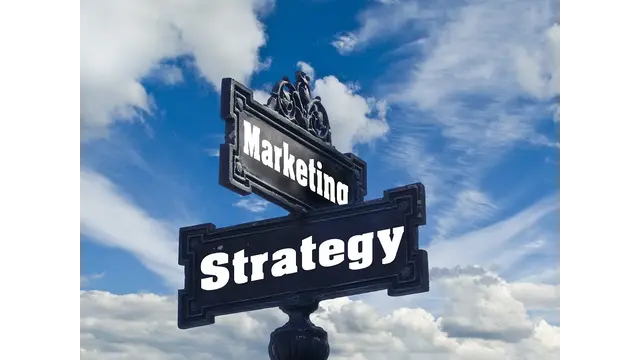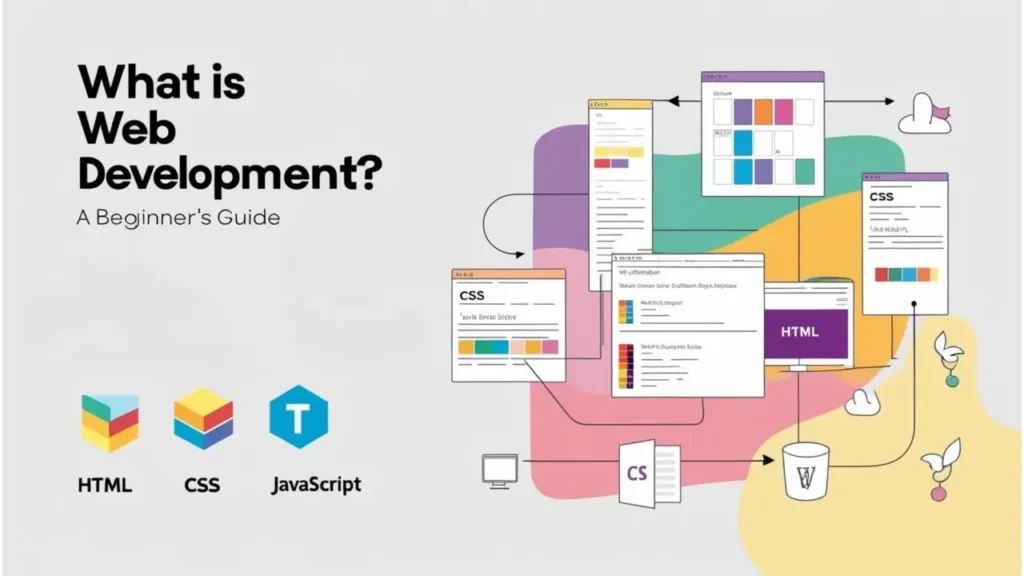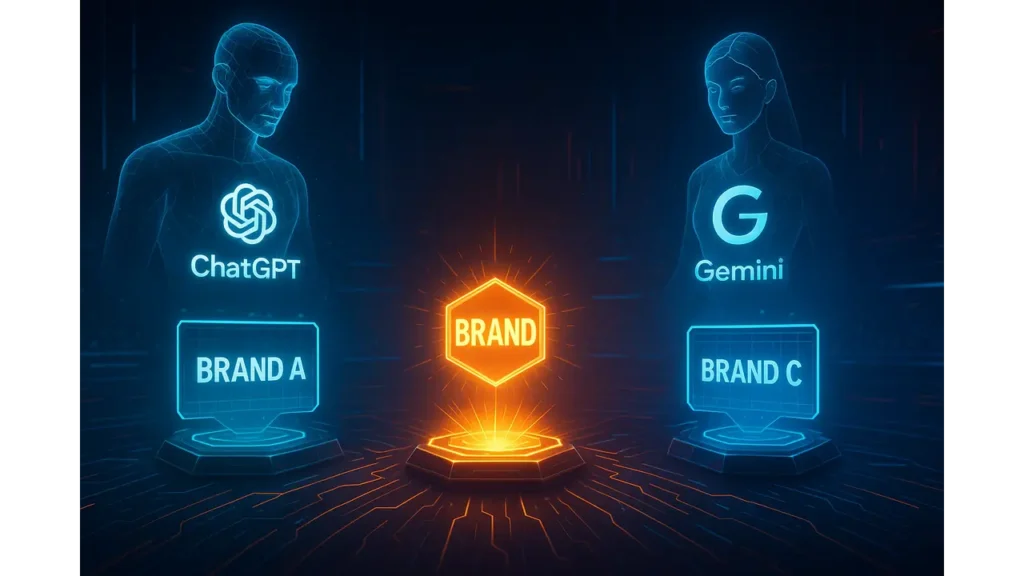Introduction: Why Psychology Matters in Branding
Have you ever wondered why some brands linger in your mind long after you’ve encountered them, while others fade into the background? Or why you feel compelled to choose one brand over another, even when the products seem identical? The answer often lies in the subtle art and science of branding psychology.
Psychology in branding delves deep into the human psyche to understand emotions, behaviors, and perceptions that influence decision-making. This approach allows brands to create connections that feel personal, foster trust, and inspire loyalty. Every color, story, logo, and campaign you see has likely been designed to tap into your subconscious mind, creating associations that compel action.
In this article, we’ll explore the foundational principles of psychological branding, including emotional branding, consumer perception, neuromarketing, and trust-building. We’ll also share actionable strategies for integrating these insights into your branding efforts, with examples of how WODO uses these principles to create impactful brands.
Key Takeaways
- Branding psychology shapes consumer emotions, behaviors, and perceptions, creating stronger connections.
- Emotional branding employs storytelling, sensory elements, and values to establish trust and loyalty.
- Positive consumer perception leads to long-term advocacy and brand loyalty.
- Neuromarketing taps into brain science to refine branding strategies for maximum engagement.
- Wodo Digital incorporates psychological principles to craft memorable and effective brand experiences.
Table of Contents

The Role of Psychology in Modern Branding
Psychology in branding is the secret sauce behind the emotional pull of some of the world’s most successful brands. It’s the reason why you reach for your favorite soda in the grocery store or why a luxury handbag feels like more than just a product—it’s an identity statement. By integrating psychological principles into branding strategies, businesses can create a lasting imprint on the minds and hearts of their audience.
This section unpacks how branding influences human behavior and why psychology is essential in modern branding strategies.
How Branding Influences Human Behavior
Human behavior is a fascinating interplay of conscious choices and subconscious influences. At its core, branding psychology targets both levels, shaping perceptions and triggering decisions. Here’s how brands influence our behavior:
1. Cognitive Biases: Mental Shortcuts That Drive Decisions
Humans rely on cognitive biases to process information quickly. These biases are mental shortcuts that brands can use to influence consumer choices. Let’s explore some key biases at play:
• The Halo Effect:
This phenomenon occurs when a positive impression of one aspect of a brand influences how we view other aspects. For instance:
- A sleek, premium-looking product design may lead us to believe the product is of higher quality, even if we’ve never tried it.
- Apple’s minimalist aesthetics create a halo effect, making consumers assume its products are innovative and reliable.
• Social Proof:
Humans tend to mimic the actions of others, especially in uncertain situations. Brands that showcase customer reviews, testimonials, or user-generated content leverage social proof to build trust.
• Example: Amazon prominently displays product ratings and reviews, encouraging hesitant buyers to trust the opinions of other shoppers.
• Anchoring Bias:
This bias occurs when consumers rely too heavily on the first piece of information they encounter. Brands use this by presenting a “higher” price first, followed by a discounted price, making the latter seem like a great deal.
• Example: Subscription services like Spotify highlight premium prices before introducing a “free” tier, making the free option feel like a no-brainer.
2. Emotional Decision-Making: The Limbic System in Action
Contrary to what we’d like to believe, most decisions are driven by emotions, not logic. This is because the limbic system, the part of the brain responsible for emotions and memory, plays a key role in decision-making. Brands that appeal to emotions often have an edge over competitors who rely purely on rational arguments.
• Example:
• Insurance companies often use emotional advertising to build trust and connection. Ads showcasing families, safety, and love (e.g., Allstate’s “Are you in good hands?”) create a sense of security, appealing to our need for protection.
Research by Harvard professor Gerald Zaltman found that 95% of purchasing decisions are subconscious, meaning brands that connect emotionally are more likely to succeed.
3. Memory Retention: How Emotions Make Brands Memorable
Humans are more likely to remember things that evoke strong emotions. This is why emotional branding campaigns are far more effective than purely informational ads.
• The Role of Positive Associations:
Emotional experiences—whether happiness, nostalgia, or excitement—leave a lasting imprint. For example:
- Coca-Cola’s holiday campaigns evoke feelings of togetherness and joy, ensuring the brand is synonymous with happy occasions.
- Nike’s inspiring “Just Do It” commercials motivate and empower viewers, leaving a lasting impression of empowerment.
• Nostalgia as a Memory Trigger:
Nostalgia taps into positive memories from the past, creating an emotional connection that feels personal.
• Example: Brands like LEGO often use nostalgia to target both children and adults, reminding older audiences of their childhood while introducing their products to the next generation.

Why Psychology-Driven Branding Matters
Branding rooted in psychology doesn’t just look good—it works. Here’s why it’s indispensable in today’s competitive market:
1. It Differentiates Your Brand in Crowded Markets
In a world saturated with choices, it’s not enough to simply offer a great product or service. Brands need to resonate on a deeper level. By understanding what motivates their audience, companies can craft messages and experiences that set them apart.
• Example: Warby Parker disrupted the eyewear industry by addressing pain points (affordable, stylish glasses) and aligning with consumer values (social responsibility).
2. It Fosters Emotional Connections
When consumers feel an emotional connection to a brand, they’re more likely to choose it over competitors—even if the competition offers similar products or better prices. Emotional connections drive long-term loyalty, repeat purchases, and advocacy.
• Example: Disney is more than an entertainment company—it’s a brand synonymous with joy, magic, and family. This emotional resonance ensures it remains relevant across generations.
3. It Drives Customer Retention and Advocacy
When consumers feel understood by a brand, they’re more likely to stay loyal and recommend it to others. Psychology helps brands create personalized experiences that foster trust and advocacy.
• Example: Spotify uses personalized playlists like “Discover Weekly” to make users feel seen and valued, increasing customer retention.
4. It Boosts Sales and Conversions
Psychology-based branding taps into emotional triggers that drive sales. For instance:
• Limited-time offers create urgency through fear of missing out (FOMO).
• Bundling products taps into the idea of getting more value for money.
• Example: Amazon’s “Deal of the Day” creates urgency by showcasing time-sensitive discounts, driving immediate purchases.
Real-Life Application: How Psychology Shapes Iconic Brands
• Apple:
Apple isn’t just a technology company; it’s a lifestyle brand. By tapping into consumer desires for simplicity, innovation, and exclusivity, Apple has created an emotional connection that keeps customers loyal, even in the face of higher prices.
• Tesla:
Tesla appeals to environmentally conscious consumers who value innovation and sustainability. By aligning its messaging with a mission to combat climate change, Tesla fosters deep emotional connections with its audience.
• Airbnb:
Airbnb doesn’t sell accommodations; it sells experiences. Through storytelling and user-generated content, it taps into the emotions of exploration, belonging, and adventure.
The Psychological Impact of Neglecting Branding Psychology
Brands that fail to consider psychology risk losing relevance and trust. Without emotional resonance, consumers may perceive your brand as generic or forgettable. Consider the following risks:
- Lack of Differentiation: Without psychological insights, brands struggle to stand out.
- Erosion of Trust: Inconsistent messaging or failure to meet expectations undermines consumer confidence.
- Missed Opportunities: Neglecting emotional triggers means missing out on powerful motivators like nostalgia, excitement, or belonging.

Emotional Branding: Connecting on a Human Level
In a world where consumers are constantly bombarded with advertisements, emotional branding is the secret weapon that helps businesses break through the noise. It’s not just about selling a product or service—it’s about making consumers feel something. Emotional branding creates connections that resonate on a personal level, transforming a one-time buyer into a lifelong advocate.
This section delves deeper into the science, techniques, and real-world applications of emotional branding.
What Is Emotional Branding?
Emotional branding refers to the process of crafting an emotional connection between a brand and its audience. Unlike traditional branding, which focuses on product features or benefits, emotional branding aims to evoke feelings such as joy, nostalgia, belonging, or even inspiration.
At its core, emotional branding is about storytelling, shared values, and memorable experiences. It’s what makes a brand more than just a name—it’s what turns it into a symbol of something meaningful.
• Example: Nike’s “Just Do It” campaign doesn’t simply sell athletic gear; it inspires people to push beyond their limits and embrace their inner strength.
The Science Behind Emotional Branding
Understanding the science behind emotional branding reveals why it’s such a powerful strategy.
1. Neurological Foundations
The human brain processes emotions faster than logic. Emotional stimuli are interpreted by the limbic system, which governs feelings, memories, and decision-making. When a brand triggers an emotional response, it activates this part of the brain, making the experience more memorable.
• Example: Studies show that ads designed to evoke emotions (happiness, pride, or excitement) are more likely to be remembered than those that focus solely on facts or features.
2. The Role of Dopamine and Oxytocin
• Dopamine, the “feel-good” chemical, is released when we experience something enjoyable or rewarding. Emotional branding that elicits joy or surprise can create a positive association with a brand.
• Oxytocin, known as the “bonding hormone,” is triggered by feelings of trust, love, or connection. Brands that promote inclusivity or shared values can increase oxytocin levels, strengthening customer loyalty.
Why Emotional Branding Works
1. It Builds Trust:
People are more likely to trust brands that feel human. Emotional branding creates the perception that a brand understands its audience, fostering loyalty.
2. It Enhances Memory Retention:
Emotional experiences are easier to recall. This is why emotional campaigns often outperform rational ones in long-term brand recall.
3. It Drives Purchasing Decisions:
Most purchasing decisions are emotional, not logical. Emotional branding leverages this fact to influence buying behavior.
4. It Encourages Advocacy:
Consumers are more likely to recommend brands they feel emotionally connected to.
Key Techniques in Emotional Branding
Emotional branding isn’t a one-size-fits-all strategy. Successful brands use a combination of techniques tailored to their audience and goals.
1. Storytelling: Crafting Narratives That Resonate
Stories are at the heart of emotional branding. They humanize a brand, making it relatable and memorable. A good story taps into universal themes like love, struggle, or triumph.
• Example 1: Dove’s “Real Beauty” campaign features authentic stories of women challenging beauty stereotypes, creating a sense of empowerment and inclusion.
• Example 2: Airbnb’s “Belong Anywhere” campaign uses real-life stories from hosts and travelers to evoke feelings of connection and adventure.
Tips for Effective Storytelling:
• Focus on universal emotions like joy, hope, or inspiration.
• Showcase real people or relatable characters.
• Use a narrative arc with a clear beginning, middle, and resolution.
2. Sensory Branding: Engaging the Five Senses
Sensory branding taps into sight, sound, smell, taste, and touch to create a multi-dimensional experience. Each sensory element can evoke specific emotions and strengthen the connection between a consumer and a brand.
• Color Psychology:
• Blue: Trust and reliability (e.g., LinkedIn, IBM).
• Red: Passion and energy (e.g., Coca-Cola, Netflix).
• Green: Balance and health (e.g., Whole Foods, Starbucks).
• Music and Sound:
Sound is a powerful emotional trigger. Think of the nostalgia evoked by the Intel jingle or the excitement stirred by Netflix’s signature “ta-dum.”
• Smell:
Scents are tied closely to memory and emotion. Retail stores often use signature scents to enhance the shopping experience.
• Example: Abercrombie & Fitch infuses its stores with a signature fragrance to create a consistent sensory experience.
• Touch:
Texture and packaging can influence how consumers perceive a product. Luxury brands, for example, use premium materials to evoke sophistication and quality.
3. Values-Based Branding: Aligning With Consumer Beliefs
Modern consumers want to support brands that align with their personal values. Emotional branding often incorporates social or ethical messages that resonate with the audience.
• Example 1: Patagonia’s commitment to environmental sustainability attracts eco-conscious consumers who share the brand’s values.
• Example 2: TOMS Shoes’ “One for One” program, which donates a pair of shoes for every pair purchased, fosters a sense of purpose and social responsibility.
Tips for Values-Based Branding:
• Be authentic. Insincere attempts to capitalize on social issues can backfire.
• Focus on causes that align with your brand’s identity and audience.
4. Personalization: Making Customers Feel Valued
Personalized experiences make consumers feel seen and appreciated, deepening their emotional connection to a brand.
• Example 1: Coca-Cola’s “Share a Coke” campaign featured bottles with popular names, creating a sense of individuality and personal connection.
• Example 2: Spotify’s personalized playlists, like “Discover Weekly,” make users feel understood.
Tips for Personalization:
• Use customer data to deliver tailored recommendations.
• Create campaigns that address specific needs or preferences.
5. Nostalgia Marketing: Tapping Into Happy Memories
Nostalgia is a powerful emotional trigger, evoking fond memories of the past. Brands that incorporate nostalgic elements can create a strong emotional connection with consumers.
• Example 1: LEGO’s campaigns appeal to both children and adults, blending modern play with the nostalgia of childhood memories.
• Example 2: Netflix leverages nostalgia with reboots of classic shows like Full House (Fuller House) or Stranger Things, which taps into 1980s culture.

Case Studies: Brands That Excel in Emotional Branding
1. Nike: Empowerment Through Inspiration
Nike’s branding consistently focuses on inspiring its audience. Campaigns like “You Can’t Stop Us” highlight real stories of perseverance, empowerment, and triumph, creating a deep emotional bond with consumers.
2. Coca-Cola: Happiness and Togetherness
Coca-Cola’s marketing consistently associates the brand with moments of joy, connection, and celebration. From its iconic “Share a Coke” campaign to holiday advertisements featuring Santa Claus, Coca-Cola excels at creating a positive emotional association.
3. Apple: The Emotional Power of Simplicity
Apple’s minimalist design and messaging evoke feelings of sophistication and innovation. The brand’s emphasis on individuality (“Think Different”) connects with consumers on a personal level, making them feel part of an exclusive community.
Challenges in Emotional Branding
While emotional branding is highly effective, it’s not without challenges. Brands must be cautious to avoid:
- Inauthentic Messaging: Consumers can quickly detect when a brand is being disingenuous or opportunistic. Example: Brands jumping on social causes without taking meaningful action risk alienating their audience.
- Overreliance on Emotion: Emotional branding should complement, not overshadow, the practical benefits of a product or service.

Neuromarketing Techniques in Branding: Understanding the Consumer Mind
What Is Neuromarketing?
Neuromarketing applies neuroscience to understand how consumers respond to branding stimuli. This cutting-edge approach helps brands fine-tune their messaging and strategies.
Key Neuromarketing Techniques
1. Eye-Tracking Studies
Eye-tracking reveals which parts of a website or ad capture attention, allowing brands to optimize layouts for better engagement.
2. Emotional Resonance Testing
Techniques like heart rate monitoring and facial expression analysis measure emotional responses to campaigns.
• Example: Testing showed Coca-Cola’s happiness-themed ads elicited stronger positive reactions than competitor campaigns.
3. Behavioral Triggers
Strategies like scarcity and urgency tap into instinctual behaviors.
• Example: “Limited-time offers” trigger FOMO (fear of missing out), compelling quicker decision-making.
4. Multisensory Branding
Combining sound, visuals, and touch creates a holistic brand experience.
• Example: Apple’s product unboxing experience engages multiple senses, enhancing customer satisfaction.

FAQ: Common Questions About Psychology in Branding
Q1: What is the role of emotions in branding?
Emotions drive decision-making, making them essential for building lasting consumer relationships.
Q2: How does neuromarketing improve branding strategies?
Neuromarketing provides insights into subconscious reactions, helping brands refine campaigns for better engagement.
Q3: Why is consumer perception vital for brand loyalty?
Positive consumer perception fosters trust and builds advocacy, both essential for loyalty.
Q4: Can small businesses leverage psychology in branding?
Yes! Small businesses can use storytelling, sensory branding, and loyalty programs to connect with audiences.
Q5: How does Wodo Digital apply psychology in branding?
Wodo Digital uses psychological principles to craft branding strategies that resonate emotionally and engage deeply.
Conclusion: Building Brands That Resonate
Psychology isn’t just a tool—it’s the heart of effective branding. By understanding emotions, shaping perceptions, and leveraging neuroscience, brands can stand out, connect with their audience, and inspire loyalty.
At Wodo Digital, we specialize in crafting psychology-driven branding strategies tailored to your business. Whether you’re building a new brand or reimagining an existing one, we’re here to help.
Ready to create a brand that resonates? Contact Wodo Digital today, and let’s start building connections that last a lifetime.












